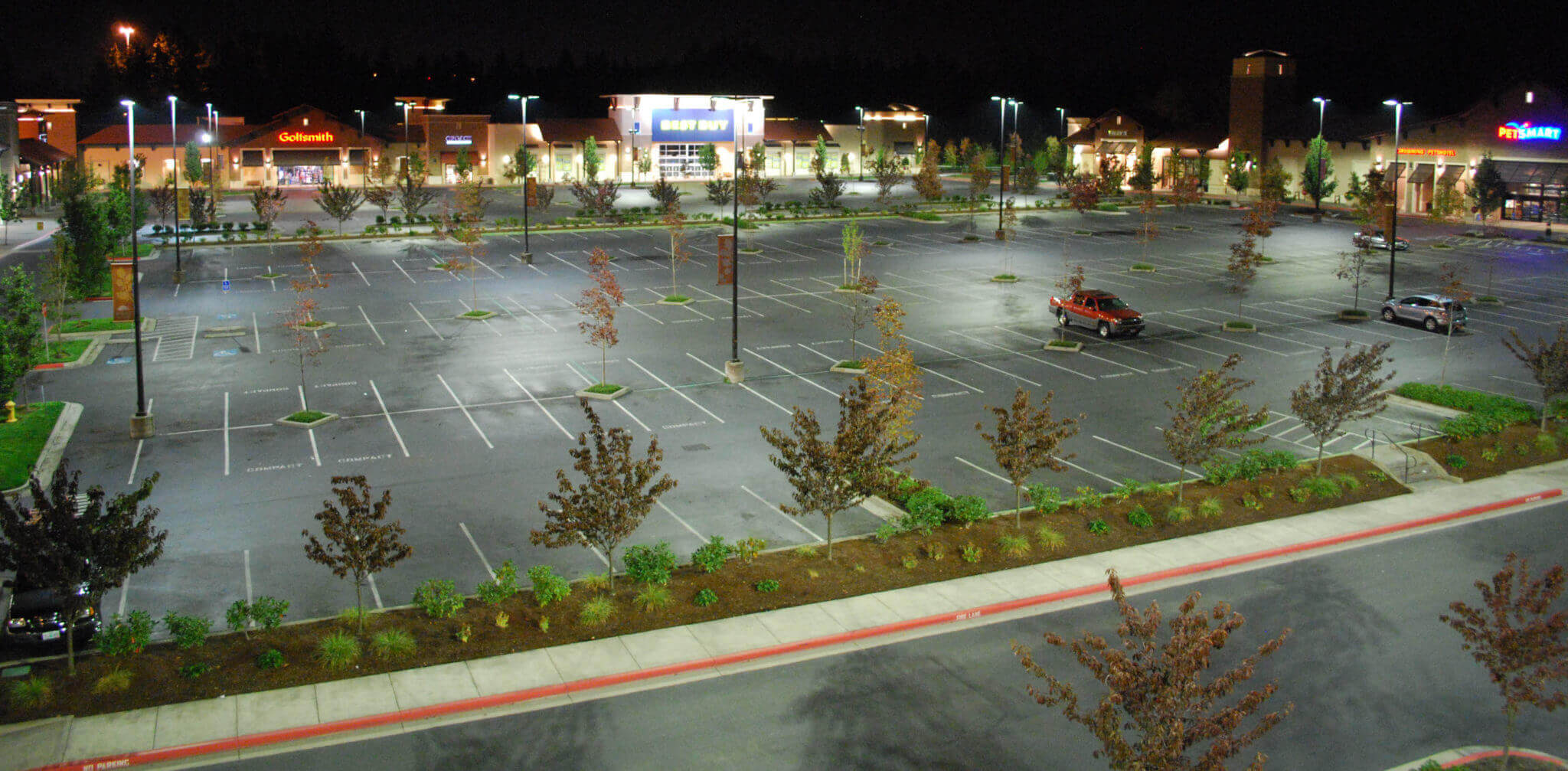LED lights work through electricity flow between two existing electrodes. The electrodes consist of both an anode and a cathode. In general, diodes are mostly built out of semi-conductive components. There is no need for any filaments, such as those in sodium lighting sources. LED parking lot lights feature many distinct advantages, including enhanced lifespans of up to 100,000 hours, fantastic energy efficiency, minimal maintenance costs, and very high quality of light production.
LED light solutions also possess a broad range of color temperatures. Even though CRI depends on a particular light source, LED lighting solutions regularly feature CRI between 65 and 95. It is also possible to switch LED parking lot lights on and off immediately since none of them require any period for cooling down. The result is a steady, non-flickering light that is smooth and can last for a long time. Let’s focus on the disadvantages of metal halides compared to LED lighting.
Understanding metal halide lighting
Used as a viable lighting source since the 60s, metal halide lamps are used to illuminate retail stores, parking lots, sports fields, streets, and factories. These lamps put out a distinctly white light. When compared to other more traditional lighting sources, metal halide light sources display increased luminous efficiency.
Metal halide lamps include argon, mercury, or xenon gases in them. A majority of metal halide lamps work by combining a specific metal with halogen gas. In this case, the metals are mixed with ingredients like bromine and iodine. The color temperature of the light spectrum generated depends solely on the type of metal halides used in the lamp.
Each bulb has an outer section and an arc tube on the inside. In the off state, the metal halides and mercury lie dormant in the arc. The mercury is heated and vaporizes, and also vaporizes the metal halide, as soon as a voltage is applied. As the atoms of the halide migrate from the arc, visible white light is generated.
Disadvantages of metal halide lighting compared to LEDs
- Mercury
All metal halide lamps contain mercury, which is a highly toxic substance. This places added pressure on users of metal halide lamps to handle them safely as well as being able to dispose of dead bulbs cautiously. By law, the EPA has outlined specific methods used for recycling metal halide lamps containing mercury.
- Ruptures of arc tubes
Many times, as a metal halide lamp approaches the end of life, the pipes begin to deteriorate. One of the first signs is usually discoloration. The cells also tend to produce extra heat, more than average. The effect of this is often rupture of the arc tube as well as the breakage of the glass bulbs.
- Warm-up period
Out of all the lighting techniques, metal halides take the longest to reach peak emission, which can be anywhere from 5 to 15 minutes.
Conclusion
Metal halide lamps are nowhere near LED parking lot lighting sources in terms of efficiency and durability. This is why it is best to invest in LED lighting options, which are safer, last longer, and do not require warm-up periods.


